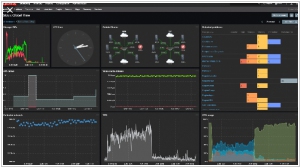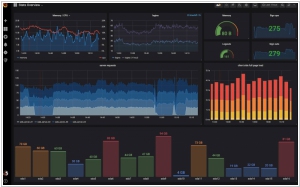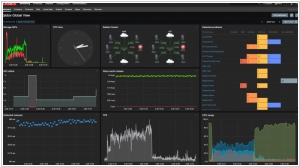Grafana vs Zabbix
July 23, 2023 | Author: Michael Stromann
See also:
Top 10 IT Monitoring software
Top 10 IT Monitoring software
Grafana and Zabbix are both powerful monitoring and visualization tools used extensively in the IT industry, yet they serve distinct purposes. Grafana excels as a data visualization platform, offering a user-friendly interface that integrates seamlessly with various data sources, including databases, cloud services, and time series databases like Prometheus. Its focus on creating visually appealing dashboards and charts makes it ideal for data exploration and real-time monitoring. On the other hand, Zabbix is a comprehensive monitoring solution designed for network and infrastructure monitoring. With its robust feature set, Zabbix provides advanced functionalities for data collection, alerting, and performance analysis, making it a preferred choice for larger-scale, complex environments.
See also: Top 10 IT Monitoring software
See also: Top 10 IT Monitoring software
Grafana vs Zabbix in our news:
2019. Zabbix 4.2 adds built-in support of Prometheus data collection

Zabbix Team has recently unveiled the launch of Zabbix 4.2. This latest version introduces a comprehensive monitoring system equipped with cutting-edge features, including data collection and processing, distributed monitoring, real-time problem and anomaly detection, alerting and escalations, visualization, and more. Zabbix 4.2 significantly enhances data collection capabilities, supporting diverse methods such as push and pull from various sources like JMX, SNMP, WMI, HTTP/HTTPS, RestAPI, XML Soap, SSH, Telnet, agents, scripts, and more. Notably, the integration with Prometheus has been added as a new feature, allowing native support for the PromQL language. Additionally, the utilization of dependent metrics empowers the Zabbix team to efficiently gather a vast amount of Prometheus metrics. By making a single HTTP call, all the required data can be retrieved and subsequently reused for relevant dependent metrics.





